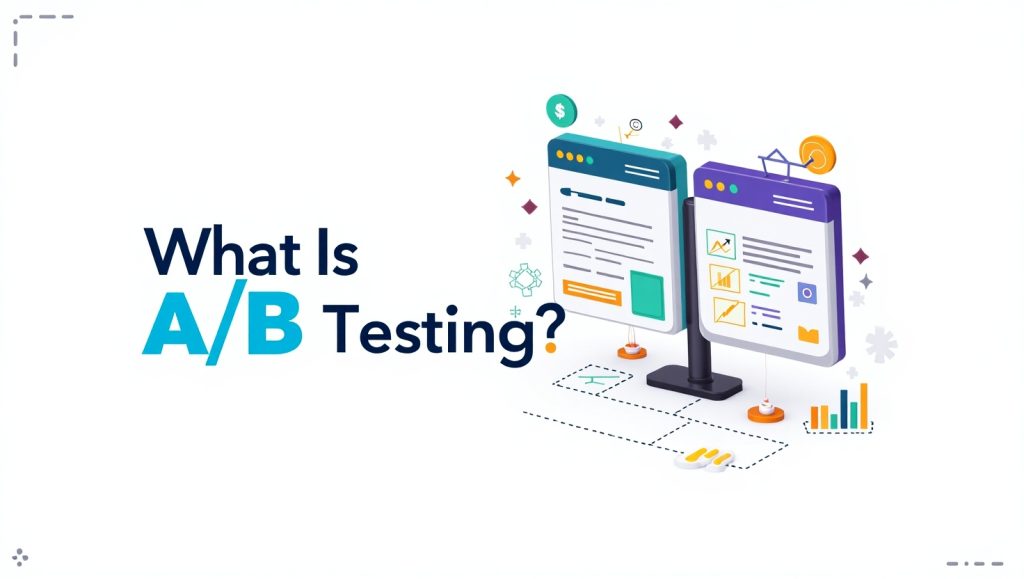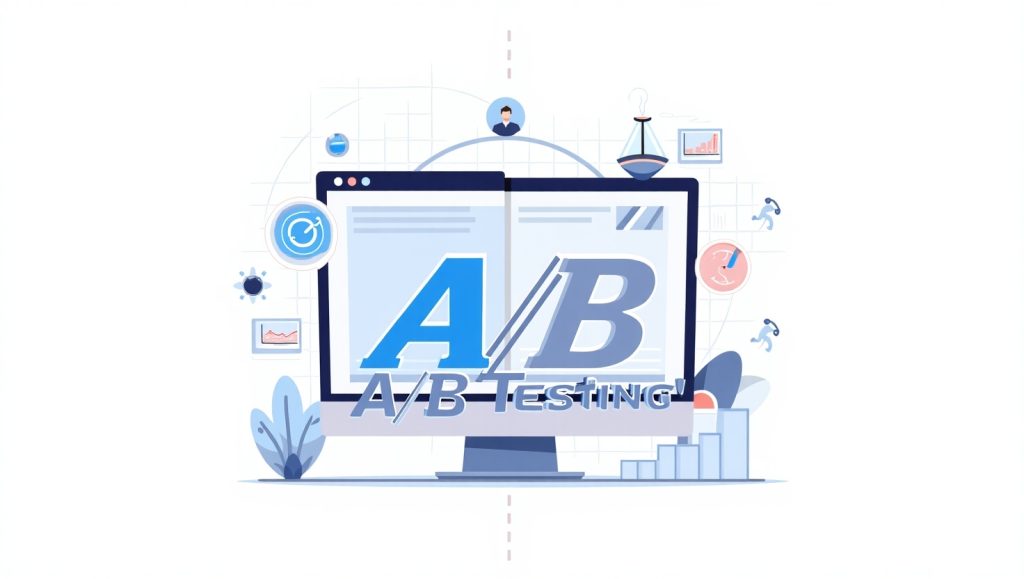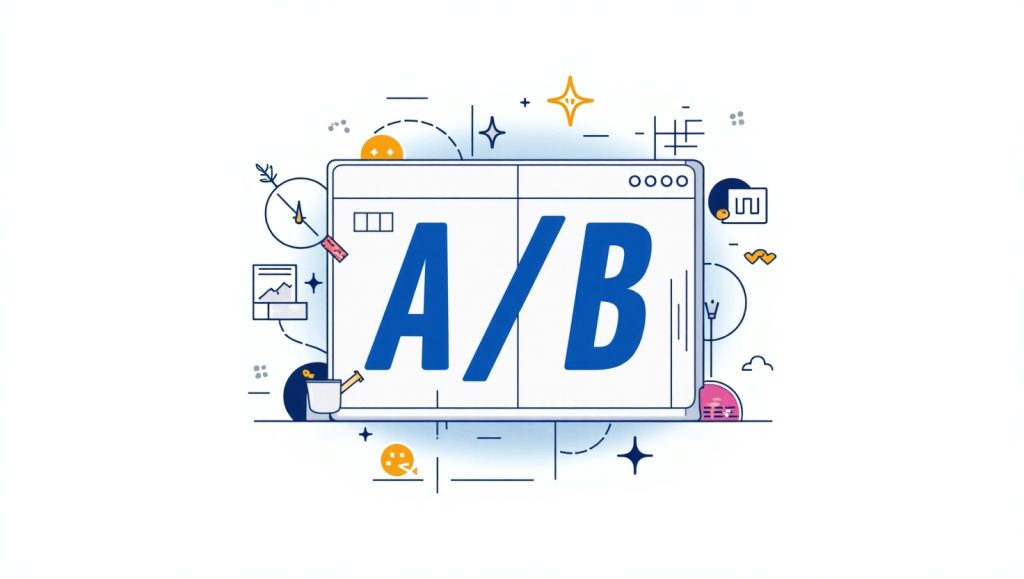
A/B testing – or split testing for that matter – is a technique for comparing two versions of something. In other and plain words, it is side-by-side. You show version a to part of the user pool and version b to the other half and see which works better. This makes up the food of a better-informed decision from data rather than guesswork.
A/B testing is a boon for small businesses since it helps them avoid wasting time and investment on strategies that might not have worked. Instead, it gives a clear answer about what people really like. Now, you can test two subject lines, headlines, images for products, or even call-to-buy conventions in your email messages. The one that gets more clicks, sales, or sign-ups wins, and you move with that.
A-B test is relatively easy. You don’t need to have a huge budget for marketing or team of analysts to perform it. Many website builders, email platforms, and advertising tools have included A/B testing features. With just a bit of patience and attention to detail every business owner could have access to such methods to improve marketing results.
It is all about knowing your audience and fine-tuning your game over time, with even minimal changes-fixing the hue on your button or changing the tone of your message-resulting in massive changes. And since you source from the people themselves, data on choices will be comforting.
Now, let’s discuss how the A/B tests are going to actually function for small businesses in real time, starting from improving marketing.
How A/B Testing Improves Marketing
Staying in market with their business, however, still no universal solution seems to exist for that. Yours are different from them, your audience, and what attracts their attention might be different from the other; A/B testing allows the small business marketing messaging and visuals to try out what seems to be more in resonance with the target audience. Say you are launching a social media advertisement campaign. Two ads are prepared: one with a fun and informal spirit, while the other is more towards a formal kind of feel. A/B testing would allow the ads to be run concurrently while tracking which one does better in clicks, engagement, or conversions. That kind of on-the-ground knowledge is priceless. It tells you how to speak to your audience in ways that seem natural and persuasive to them.
Another great example of A-B testing is in email marketing. With A/B testing, you can test subject lines, content arrangement, image placements, and call-to-action copies. Tracking open rates and click-through rates will tell you which communication style best engages your audience.
It is important to keep in mind that small businesses usually operate on some very limited budgets. In these instances, A/B testing becomes a very important tool to ensure that you are getting the best returns on your investments by prohibiting any spending beyond this on strategies that are essentially useless. Thus, rather than relying on guessing, you are basing this on the hard behavior of your customers.
In the long run, A/B testing leads to efficient and targeted marketing, creating avenues for growth, engagement, and success of the business.
Why Small Businesses Should Use A/B Testing

The small businesses have to struggle literally at all the margins, with meager staff and cut-throat competition. Every move counts: and through A/B testing, one could get rid of the guesswork for the vital ones. You do not depend on assumptions but on ground realities to make a smarter move.
Imagine you have just created a new landing page for your website. You think you have a perfect headline-but how can you be sure that this is the best headline? A B test will enable you to compare two versions: one based on the current headline and the other with a slight variation in the text. After collecting data, you’ll derive the insight about which has led to an increase in sign-ups or inquiries. Insight you can act on, fast.
It isn’t all about either redesigning or spending a bunch of money. It allows you to test minor changes – one by one – without interrupting the whole flow of the business. And these small changes can lead to big improvements in your conversion rates, engagement, and sales.
In A/B testing, you often end up in a fast-forward button for speedier learning, development, and term building confidence in your choices. To comment, it has the potential to deliver results where ad copy is concerned, multifaceted testing of web layouts, or scripts concerning customer service.
Over time, A/B testing turns into something more than a tool; it becomes part of your business’s culture. You’re always learning, always improving, and always moving toward what works best for your customers.
A/B Testing in Action Real Business Examples
Life becomes more interesting with a few examples in practice. Imagine you run a small bakery and decide to give something to your customers as a promotion. You created two posters for social media–one with a close-up view of a cupcake and the other with the image of your storefront itself. You A/B test them-posting each at the same time, but on different days, and tracking which one gets more responses-with likes and messages. That is A/B test.
Consider a freelance web designer creating a landing page-a call-to-action button in bright red for Version A, softer muted green for Version B. After testing, the red version performs 25% better. Simple and powerful it is-real results based.
Of course, email newsletters are also subjected to this particular experiment. A local gym would try this out, testing against two different email subject lines: ‘Get Fit in 30 Days’ and ‘Ready for a Challenge? Richer’. Whichever of the two becomes more popular with opens becomes standard for such initiatives in future campaigns.
They are really cheap and easy to try, but they return serious data that can be used to direct future decision-making. You don’t need to change your entire brand or your entire strategy. Just small things that really make the difference in how people are perceiving your business can be tested.
These little experiments can accumulate. Over time, then, you have created a brand much stronger because it speaks to your ideal customer without guesswork or waste.
Best Practices for Running an A/B Test

A/B testing may seem very technical, but it’s actually quite easy if done using a few best practices. First, make sure to test exactly one variable at a time. For example, test email: don’t change subject line and layout at once. Otherwise, you will not know what change caused the difference.
Second, make sure your sample is large enough; don’t conduct just 10 people’s tests as results won’t be significant. Ideally, you run your tests until you are able to collect enough data on which to make a confident decision; most platforms will guide you in this regard.
Third, always clearly establish the goal beforehand. What do we want to change? Clicks? Sales? Signups? Time spent on the page? Setting this goal will keep you on track to knowing metrics that matter and making sense out of results.
Timing is important, too. Don’t run your test over a holiday unless that’s your normal busy time. And allow your test sufficient time to gather useful data: twenty-four hours usually isn’t enough unless you have a huge audience.
Finally, test your documentation. Create a simple spreadsheet indicating what you tested, when you did it, the results, and what decision you made because of it. This builds a library of experience for you to refer to later and for sharing with your team.
When an A/B test is correctly done, it becomes part of a person’s second nature. It’s not just a once-in-a-lifetime thing; it’s a perpetual cycle of learning and improvement.
Tools and Platforms That Help
Well, the good news is that you don’t have to do this all by yourselves. There certainly are many tools available and laid down that aim purely towards A/B testing for small businesses.
Many email marketing platforms like Mailchimp or ConvertKit even have built-in A/B testing so you can test subject lines, send times, and even whole content blocks. There are other ways to do split tests on your website, such as Google Optimize or similar tools like VWO or Optimizely.
Of course, WordPressers have the added benefit of plugins that facilitate A/B testing for things like landing pages, headlines, and beyond. Some of the page builders like Elementor or Divi have built-in A/B testing tools.
For those doing social media advertising, both Facebook and Instagram allow the running of A/B split tests on ads through their ad manager. You can test everything from headlines to images and audience targeting all in one place.
For novices, tools like Unbounce or Leadpages make it incredibly easy to create and test landing pages, as such platforms are quite user-friendly and make it easy for a not-so-techy person to use.
So when in doubt, you can take the right tool, which depends on where most of your audience interacts with you: email, website, or social media. Even just with the use of one of these tools, you can change the outcome of your decision making today.